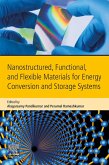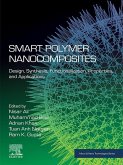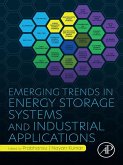Advances in Supercapacitor and Supercapattery: Innovations in Energy Storage Devices provides a deep insight into energy storage systems and their applications. The first two chapters cover the detailed background, fundamental charge storage mechanism and the various types of supercapacitor. The third chapter give details about the hybrid device (Supercapattery) which comprises of battery and capacitive electrode. The main advantages of Supercapattery over batteries and supercapacitor are discussed in this chapter. The preceding three chapters cover the electrode materials used for supercapattery. The electrolyte is a major part that significantly contributes to the performance of the device. Therefore, different kinds of electrolytes and their suitability are discussed in chapter 6 and 7. The book concludes with a look at the potential applications of supercapattery, challenges and future prospective. This book is beneficial for research scientists, engineers and students who are interested in the latest developments and fundamentals of energy storage mechanism and clarifies the misleading concepts in this field.
- Presents the three classes of energy storage devices and clarifies the difference between between pseudocapacitor and battery grade material
- Covers the synthesis strategies to enhance the overall performance of the supercapacitor device (including power density)
- Explains the energy storage mechanism based on the fundamental concept of physics and electrochemistry
Dieser Download kann aus rechtlichen Gründen nur mit Rechnungsadresse in A, B, BG, CY, CZ, D, DK, EW, E, FIN, F, GR, HR, H, IRL, I, LT, L, LR, M, NL, PL, P, R, S, SLO, SK ausgeliefert werden.
"This book provides a great background for the reasons energy storage systems are currently being developed for power systems of the future that incorporate renewable sources with traditional sources including energy storage. You will find the first few chapters providing this very informative background abuot future energy storage and power grid considerations. The book then delves into the material aspects and technologies of supercapacitors and supercapatteries. Different types of materials are being explored for supercapacitors, all with the goal of increasing capacitance, voltage, energy and power densities, and lifetime. Some of the materials covered are conducting polymers, carbonaceous nanocomposites, metal oxides, and various electrode materials. Formulations are described for supercapatteries and applications. Future direction and challenges are also discussed." --IEEE Electrical Insulation Magazine









